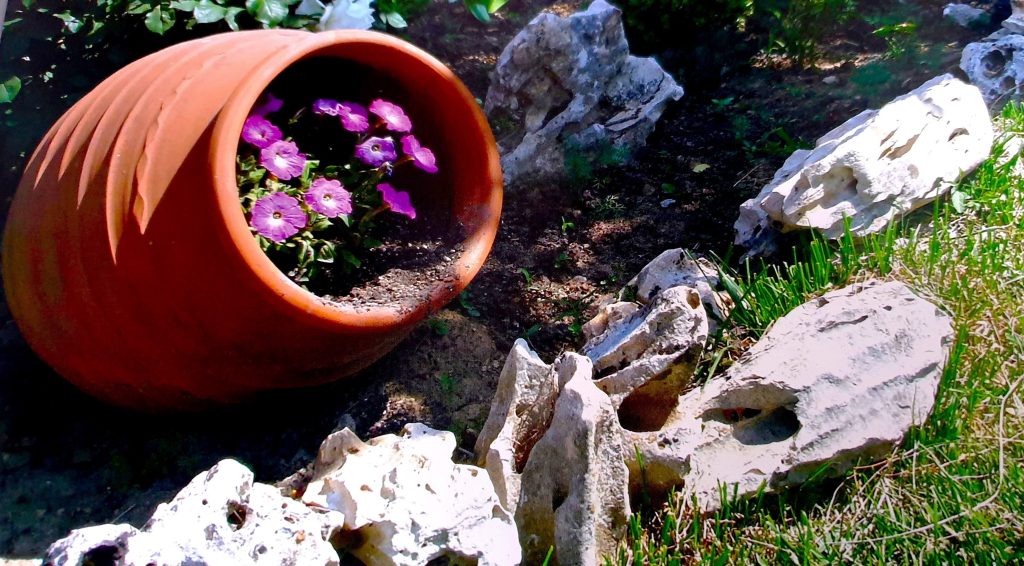
Why should you consider natural stone from a sustainability point of view?
We want to focus on this critical and timely subject: natural stone’s ecological sustainability. Natural stone is an environmentally friendly material in the building industry for several reasons. Many consumers and professionals, such as architects and designers, must be made aware of the vast difference in the carbon footprint in favour of natural stone compared with other materials used for the same purposes in construction. These materials include glass, ceramic, concrete, and wood. Natural stone has advantages compared to its competitors, glass, ceramics and cement. Stone is ready-made in the earth; all that is required is to dig it out, process it and fix it.
The Istanbul Mineral and Metals Exporters’ Association (IMMIB) and the World Natural Stone Association organized a “Sustainability in Natural Stone Industry” webinar two years ago. In the webinar, we had a chance to listen to Prof. Gerd Merke, the director at the European & International Federation of Natural Stone Industries, and Sini Laine, the general manager of the Finnish Stone Association (KIVI). The link to the webinar still exists on this link: https://www.youtube.com/watch?app=desktop&v=4fZefXg0QTc.
The following article will shed light on the matter by reporting on a webinar about many vital issues. In the webinar, “Comparison of the Carbon Footprint of Natural Stone with Other Floor Covering Materials” and “EPD (Environmental Product Declaration), which is a Requirement in the Natural Stone Industry” were discussed.
The two speakers in the webinar were Prof. Gerd Merke, who spoke from Germany and referenced the European Green Deal, a set of policy initiatives by the European Commission. The initiatives aim to make Europe climate-neutral by the year 2050. He was mainly talking about the Environmental Product Declaration (EPD). EPD is an independently verified and registered document that communicates transparently and objectively what a product is made of and how it impacts the environment throughout its life cycle.
Prof. Merke pointed out that the EU Commission wants all EU countries to implement the EPD. Countries closely interacting with the EU, such as Turkey, Switzerland and Norway, also benefit from implementing the environmental product declaration for their export products. About Turkey in particular, Prof. Merke noted that the country is “tremendous” in terms of natural stone, being a big country for production with many possibilities for the future. Turkey is right at the doorstep of Europe, which means that, from an ecological point of view, products from Turkey have a much smaller carbon footprint caused by transportation than products from China or India.
When it comes to the volume of natural stone production in Turkey and worldwide, it is small compared to the glass, concrete and ceramic industries. Prof. Merke believes natural stone producers can compete with their designs by making natural stone alternatives to other materials. It is crucial to design for people to decide what materials to use in the construction projects. Essentially, the question is: Do you want to buy an original or a substitute? The fact is that no other product in the construction industry has such a green footprint. Even wood cannot compare. Cleaning natural stone is more accessible than, for example, glass. He mentioned that the city planning authorities have stated in New York: “We cannot continue with glass, as it is not environmentally sustainable”. The research about the ecological advantages of natural stone is very comprehensive.
Prof. Merke stressed that the quarries do not harm the environment long-term, and the harm to the natural site is only temporary. For example, the old Roman quarries plentiful in Turkey can no longer be seen. Nature has taken over on these sites. Also, the waste that comes as a byproduct of the production is not harmful to the environment. Natural stone is also a material that can be re-used easily.
The second speaker of the webinar, Sini Laine, spoke from Finland and explained an EPD document published a year ago called Comparison of the Carbon Footprint of Natural Stone with other materials. The comparison was between the natural stone products from Finland and the ceramic and concrete products made in different countries and transported to Finland. However, the results can be generalized to other natural stone products regarding the production stage emissions of natural stone. She pointed out that natural stone has a tiny carbon footprint compared to other building materials. The more processing is needed, the bigger the carbon footprint will be.
In Finland, the carbon footprint per person is over 10,000 kg per year, which is relatively high in international comparison. This footprint comprises mainly emissions caused by the building and heating of homes, transport and diet. Finland has set ambitious climate goals for itself; it aims to become a carbon-neutral country by 2035 and a carbon-negative country in the 2040’s. Laine mentioned that Finland’s public sector already requires EPD, and the construction sector is one of the most significant parts of it. In the future, more and more emphasis will be on choosing environmentally sustainable building materials.
Wood is a popular material for construction in Finland and is considered environmentally friendly. Still, compared to wood, natural stone is greener. The reason is mainly the additional materials needed to finish and protect the wood. Similarly, when comparing concrete to natural stone, natural stone has a considerably smaller carbon footprint. Spare parts and maintenance double the emissions for concrete and kerb stone. On the other hand, when comparing countertops made of natural stone and quartz composite, the significant difference in emissions comes from the production stage emissions. Sini Laine concluded that the momentum for natural stone is now and that “everything is about carbon footprint” in Finland and Europe.
As a company, we export many kinds of materials from Turkey, including ceramics, cement tiles and natural stone. How can we, as the exporter and you as a customer or a designer, ensure sustainability is considered every step of the way? After all, the construction industry needs many products in the projects, and some materials will always be imported from abroad. For example, not all natural stone types are available in all countries. Also, no local production of all ceramic or cement tiles is needed. There is still a lot to do and many conscious decisions to make.
We put a lot of emphasis on finding products in each category that are also ecological, i.e. manufactured sustainably. We know the factories and workshops first-hand and are familiar with their working processes and where the raw materials come from. Luckily, Turkey is entirely self-sufficient in terms of stone types, and there is no extensive shipping of materials required to make tiles there. Our ceramics and cement tiles are handmade and produced locally in Turkey from the resources in the area.
For example, the patterned cement and terrazzo tiles are pressed mechanically from locally sourced natural ingredients (marble, limestone, sand, water and natural pigments from coloured stones). We work with our customers to find optimal shipping options to minimize the product’s carbon footprint. After all, transportation is the primary factor in it, regardless of the type of material. We do not sell composite stone imitation materials with a heavy carbon footprint before they even leave the factory due to the production process.
The other reason for us not carrying any imitations is that we believe in genuine materials that are what they look like. Using real, natural materials that have been worked on by hand causes the user to have a higher appreciation for the materials and the design. The consumer is less likely to consider them as quickly disposable “seasonal materials” that should be replaced in a short cycle of, let’s say, ten years. The truth is that we, as Western consumers, must unlearn this mode of thinking and start looking at much longer life cycles for building materials.
Generally speaking, environmentally conscious customers should avoid making small individual orders and instead concentrate all their material needs for the project into one order that can be shipped in a container. When choosing the type of materials for a project, the designer (and ultimately the paying customer) always decides what will be used. From a purely sustainability point of view, emphasizing natural stone use over other materials is well justified. Not only because of its lowest carbon footprint in production but also because its life span is longer than the other materials’ if taken care of properly. The bigger the project, the more significant the choice of materials when we consider the “bottom line” of the final carbon footprint. For a large project, the bulk of material choices should come from natural stone, whereas there can be elements of handmade ceramic tiles or cement tiles added to the plan.
